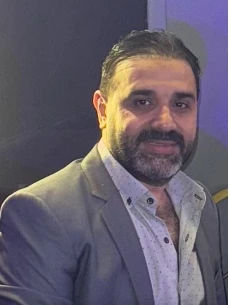Mahmoud Moustafa, DVM, PhD
Dr. Moustafa is a Veterinary Oncologist with extensive expert in design, conduct, monitor, and successfully carry out cross-disciplinary preclinical invivo model research.
Dr. Moustafa has a broad background in development of translational in-vivo models, with specific training and expertise in Radiation Oncology.
The overarching aim of his research area “Molecular- and Translational RadioOncology” is to further improve personalized oncology by integrating state-of-the-art biological, molecular biophysical, medical, and computational technological science.
Dr. Moustafa research interest’s focus mainly on tumor growth and normal tissue toxicity in laboratory animal models, in response to radiotherapy (RT).
Disclosures:
- Employment: none
- Compensation: none
- Ownership: none
- Leadership: none

